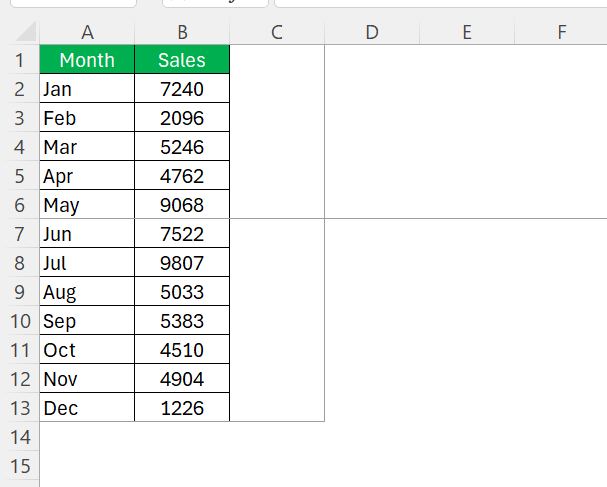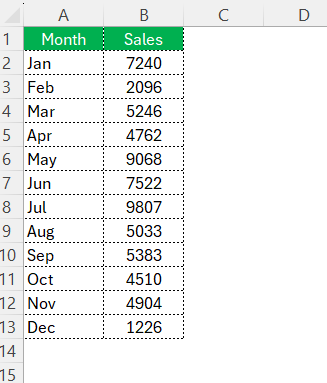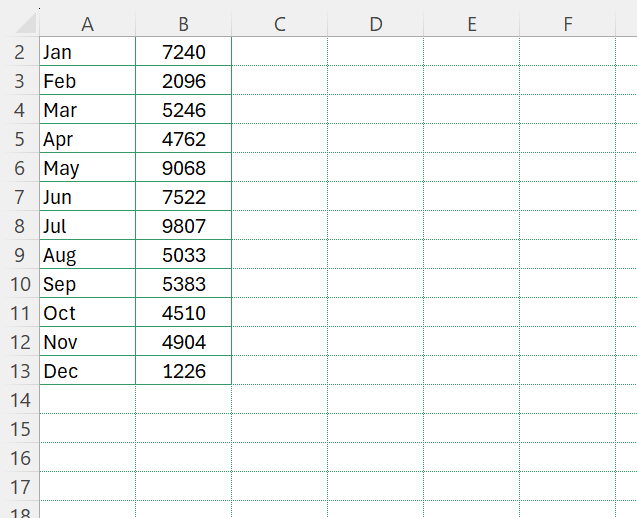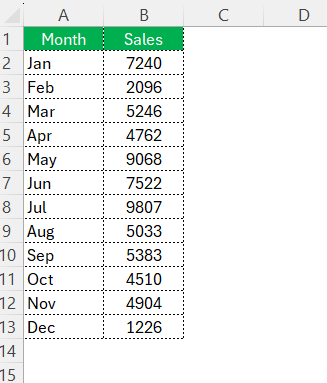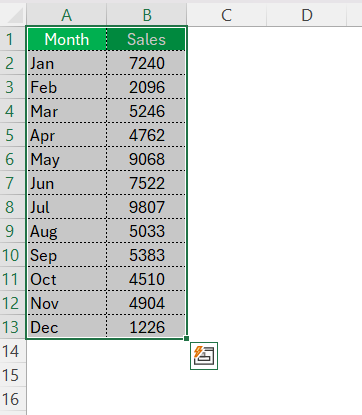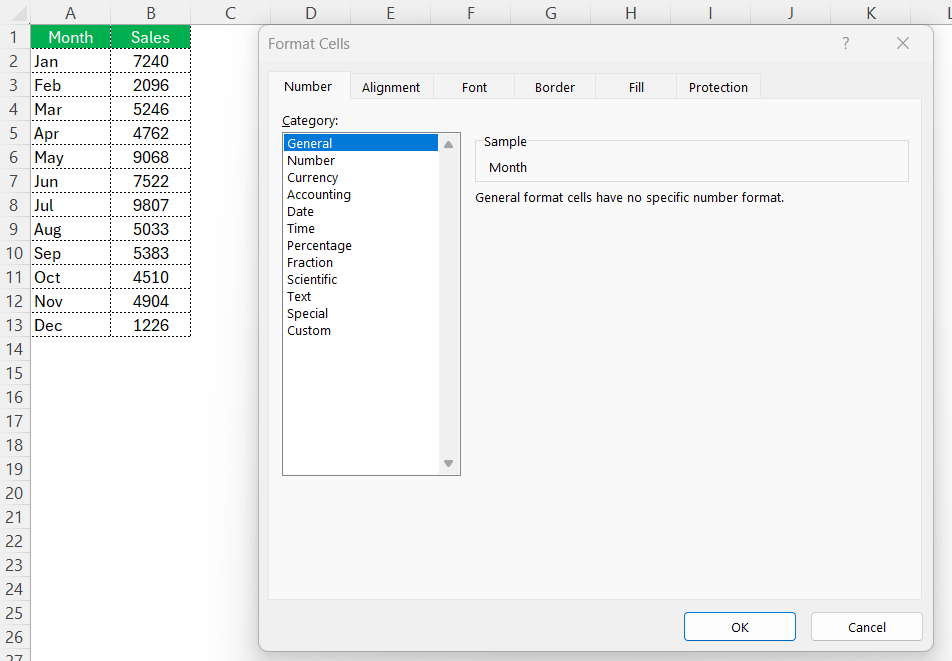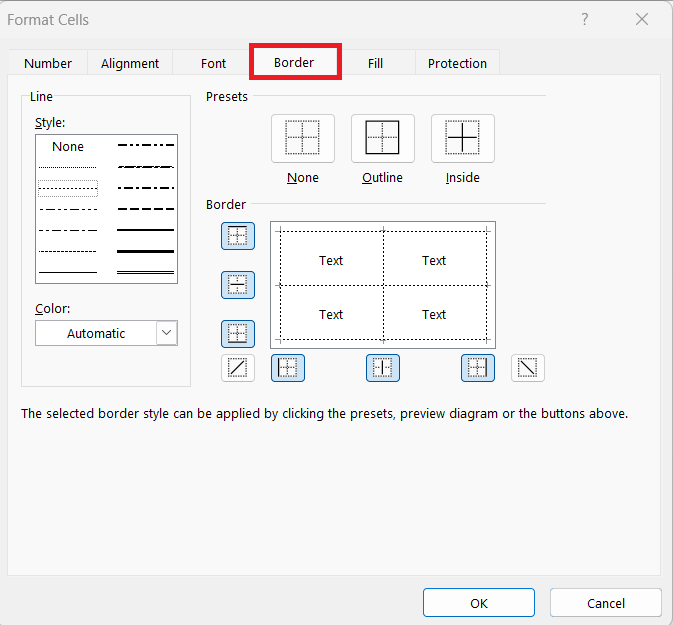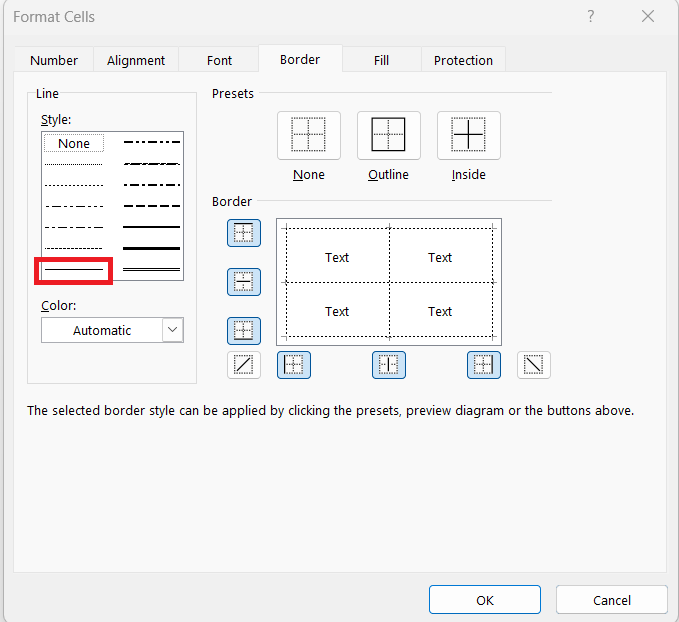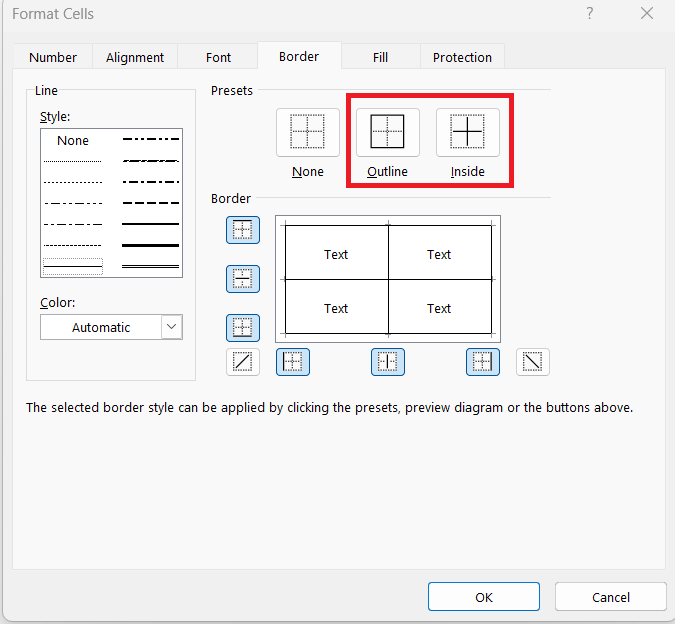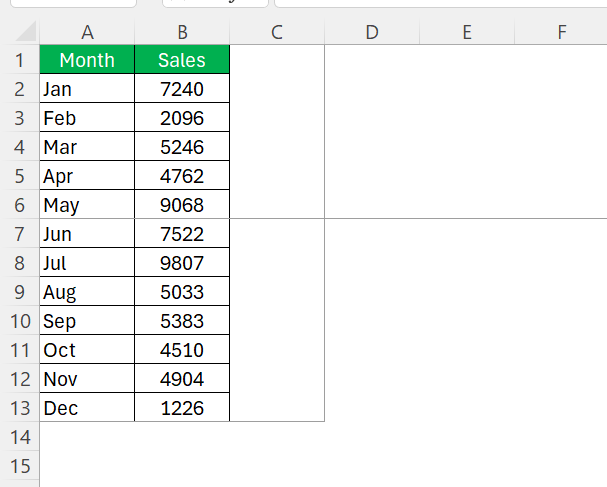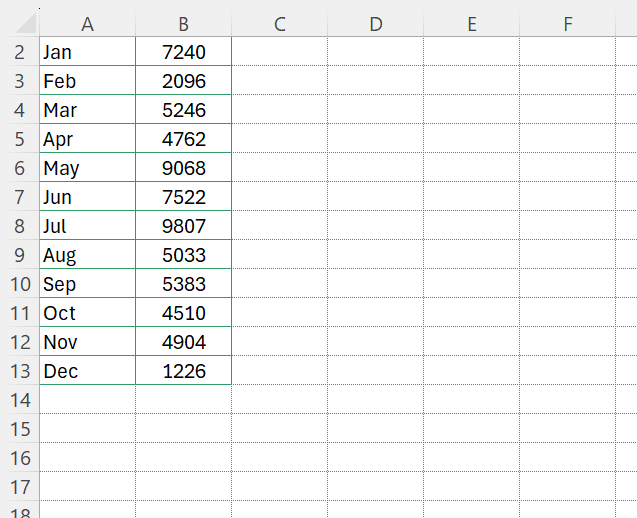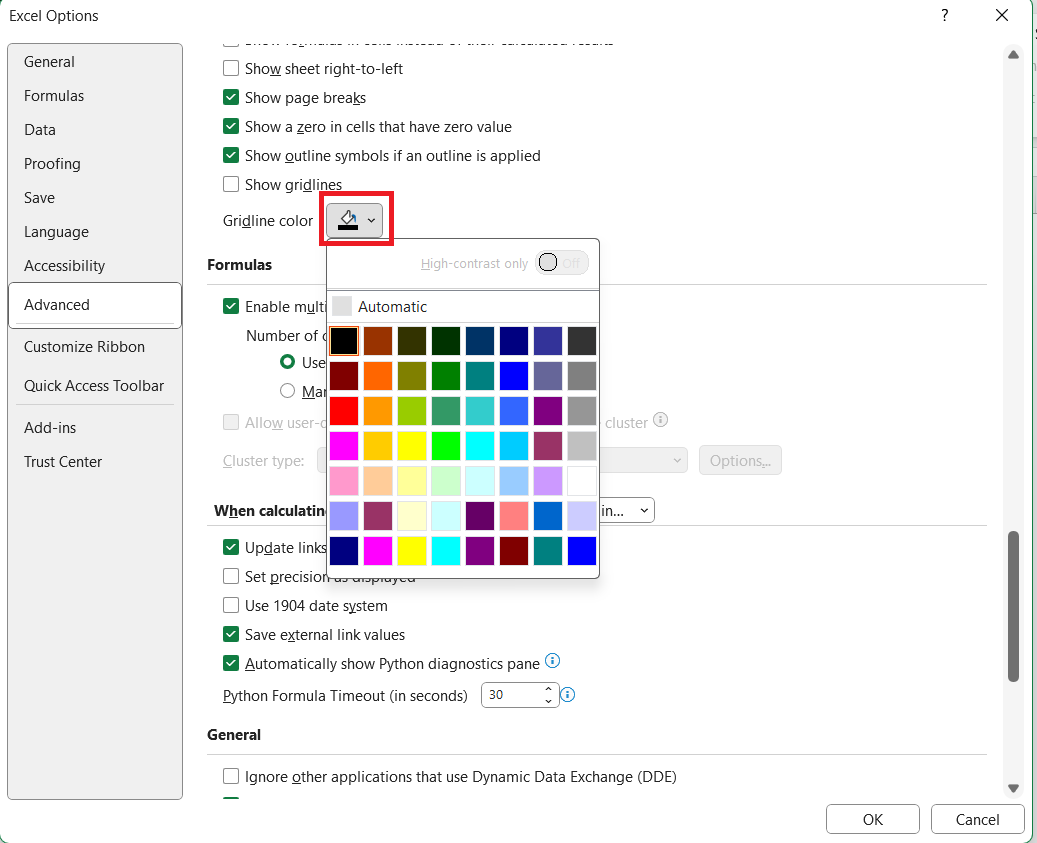Dotted lines in Excel can appear in various contexts, such as borders, print preview settings, or even when dealing with page breaks. Understanding these dotted lines is essential for users who want to customize the appearance of their spreadsheets or troubleshoot unexpected formatting. In this guide, we will explore the different scenarios where dotted lines appear in Excel and how to manage them effectively.
Key Takeaways:
- Dotted lines in Excel can indicate page breaks, cell borders, or gridlines, each serving different purposes.
- Page break dotted lines help visualize how a worksheet will be divided when printed and can be managed through the Page Layout settings.
- Dotted cell borders are customizable and can be applied or removed using the Format Cells dialog box.
- Gridlines may appear dotted based on display settings or print configurations but can be toggled or adjusted under the View and Options settings.
- Understanding and managing these dotted lines ensures a clean, professional appearance for your Excel worksheets.
Table of Contents
Introduction to Excel Dotted Lines
Understanding Excel Dotted Lines
When we talk about Excel, we often picture grids upon grids of cells where each number and text snippet finds its place. But sometimes, unexpectedly, you might encounter dotted lines crisscrossing the spreadsheet. These are not there without reason and can serve various purposes. Understanding the nature of these dotted lines is essential for troubleshooting and for keeping your sheets looking clean and professional.
Common Scenarios When Dotted Lines Appear
In my experience with Excel, there are a few typical situations when you might see dotted lines appear. One prevalent case is when you’re preparing a worksheet for printing. Excel shows where pages will break upon printing using dotted lines in both Page Break Preview and Normal view.
Another common scenario is the presence of dotted cell borders. This could be a stylistic choice applied intentionally to distinguish certain cells or areas within a spreadsheet. These borders are part of Excel’s array of formatting tools, and you can apply them as easily as you can remove them.
Lastly, you may notice what seem to be dotted lines throughout your entire worksheet, and more often than not, these are the gridlines. Excel displays gridlines by default to differentiate between cells. While they usually appear as faint solid lines, depending on the screen resolution and zoom level, they might seem dotted or broken. These gridlines can be easily turned on or off at your convenience.
Each of these circumstances has a specific remedy to remove the unwanted dotted lines, and we’ll cover that in the steps ahead.
Step-by-Step Guide to Remove Dotted Lines
Dotted Borders in Excel
Dotted borders are often used to visually separate cells or sections within a worksheet. They can be applied to individual cells or a range of cells for emphasis or to denote a specific area.
Follow the steps below to remove them –
STEP 1: Select the Cells: Highlight the cells where you want to apply the dotted border.
STEP 2: Open the Format Cells Dialog Box: Right-click on the selected cells and choose “Format Cells,” or use the shortcut Ctrl + 1.
STEP 3: Navigate to the Border Tab: In the Format Cells dialog box, go to the “Border” tab.
STEP 4: Choose the Dotted Line Style: Under “Style,” select the dotted line option. You can choose a solid line or none.
STEP 5: Apply the Border: Click on the outline or inside border options to apply the dotted line where needed. Then, click “OK.”
Dotted Lines Indicating Page Breaks
When working in Excel, dotted lines can also indicate page breaks. These lines help users visualize how their worksheet will be divided when printed. They appear as light dotted lines across the worksheet, separating the content into different pages.
Follow the steps below to remove the page break in Excel –
STEP 1: Go to the View Tab: Navigate to the “View” tab on the ribbon.
STEP 2: Uncheck Page Break Preview: If you don’t want to see these dotted lines, uncheck “Page Break Preview” in the workbook views section. This will switch back to the normal view without the page break lines.
STEP 3: Reset All Page Breaks: You can also reset all manual page breaks by going to Page Layout > Breaks > Reset All Page Breaks.
Dotted Gridlines in Excel
By default, Excel shows solid gridlines, but sometimes these may appear as dotted lines due to display settings or printer configurations. This typically happens when working with a large spreadsheet or when specific formatting is applied.
Follow the steps below to remove dotted gridlines in Excel –
STEP 1: Show or Hide Gridlines: Go to View > Show > Gridlines to toggle the gridlines on or off.
STEP 2: Change Gridline Color: Under File > Options > Advanced, scroll down to the “Display options for this worksheet” section, and change the gridline color if needed.
Additional Tips and Shortcuts
Keyboard Shortcuts to Speed Up Your Workflow
Embracing keyboard shortcuts is like discovering a secret passageway that leads straight to Efficiency Castle. Now, let’s talk about a few that can help speed up your workflow in Excel, especially when dealing with formatting issues like those dotted lines:
Press Alt + W, V, P all sequenced (but not held down simultaneously), and you will toggle the Page Break Preview. This is where you can analyze where those page breaks – and their accompanying dotted lines – are appearing.
For a quick removal of cell borders, first select the cells in question, then key in Alt + H, B, N. This combination will navigate through the Home tab to the Border options and select “No Border.”
To toggle gridlines, a simple Alt + W, V, G sequence will suffice. This shortcut lets you show or hide gridlines, depending on your current need for a clearer look at your worksheet.
And lastly, if you’re ready to print but want to ensure no unexpected dotted lines will sneak onto the page, Ctrl + P opens the Print dialogue. From there, you can enter Page Setup and adjust settings to keep those pesky dotted lines from breaking up your printed document visually.
These shortcuts not only help you circumvent dotted line issues swiftly but also trim down the clicks and drags necessary in your everyday Excel use. Just like the most seasoned pianists have their favorite chords, becoming adept at these can turn a mundane spreadsheet session into a symphony of productivity.
Best Practices to Avoid Dotted Line Formation
To keep your Excel canvas free from the intrusion of unwanted dotted lines, here are some best practices that I’ve found invaluable over countless spreadsheet sessions:
Firstly, stay vigilant with your formatting choices. Before applying cell borders, pause to consider if they’re truly necessary and remember that “Less is more” often applies. Take advantage of Excel’s formatting presets which offer clear and solid borders, avoiding dotted lines unless they serve a specific purpose.
Plan your print areas meticulously. Prior to setting up a print area, zoom out to ensure that the data layout corresponds neatly with standard page sizes. Use the ‘Set Print Area’ option thoughtfully, restricting the print range to avoid surprises in the form of page breaks.
Be proactive with page layout. Adjust margins, orientation, and scaling under ‘Page Layout’ before entering print preview. This allows you to control where page breaks occur rather than allowing Excel to dictate them automatically, which can result in pesky dotted lines.
Remember, cleanliness is close to Godliness in Excel, too. Regularly check and clean up your worksheet for any stray formatting or page breaks, particularly after importing or copying data from other sources where unwanted formatting might hitch a ride.
When sharing or co-editing a workbook, agree upon formatting standards with collaborators. This consistency not only keeps dotted lines at bay but also maintains the integrity and readability of your collaborative creation.
By adopting these habits, you protect the aesthetic and functional qualities of your worksheets. Like a master chess player thinking several moves ahead, anticipate the needs of your document to prevent those dotted lines from ever emerging as a concern.
Frequently Asked Questions
Why is there a dotted line in Excel?
Dotted lines in Excel can emerge for a few reasons: they often signify page breaks, which indicate where data will split across printed pages, or they may represent cell borders set with a dotted line style. Sometimes, gridlines can appear as dotted lines based on display settings or screen resolutions. If you’re noticing these lines, it’s due to one of these formatting features.
How do I get rid of the dotted line in Excel?
The method to get rid of the dotted line in Excel depends on the kind of dotted line. If it’s a page break, you can turn off their visibility in Excel Options, or adjust your page layout settings. For dotted cell borders, select the cells, then head to the Home tab and choose ‘No Border’ in the Borders drop-down.
Why Do Dotted Lines Appear in My Excel Sheets?
Dotted lines appear in your Excel sheets primarily as page break indicators, which show you where pages will be divided for printing. They can also arise if you’ve set cell borders to a dotted style or, less commonly, when gridlines display as dotted due to particular view settings or monitor resolution. These are normal features within Excel used for various formatting and printing purposes.
Can I Prevent Dotted Lines from Showing Up in the Future?
Yes, to prevent dotted lines from showing up in the future, adjust your page layout settings to manage page breaks, only use solid lines when applying cell borders, and switch off gridlines if they’re not needed. Establish these as part of your standard workbook set up to maintain a clean sheet without unintended dotted lines.
How to change a dotted border line to a normal solid line?
To change a dotted border line to a normal solid line in Excel, select the cells with the dotted border you wish to alter. Then navigate to the “Home” tab, click on the “Borders” drop-down menu in the “Font” group, and choose your desired solid line option. This will immediately update the cells with a clean, solid border, replacing the previously dotted lines.
John Michaloudis is a former accountant and finance analyst at General Electric, a Microsoft MVP since 2020, an Amazon #1 bestselling author of 4 Microsoft Excel books and teacher of Microsoft Excel & Office over at his flagship MyExcelOnline Academy Online Course.

